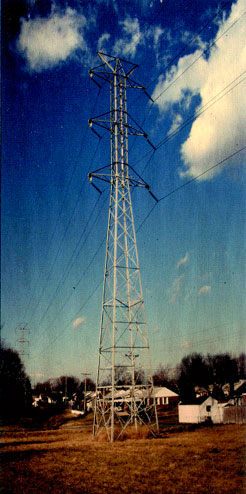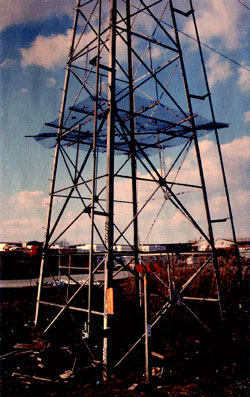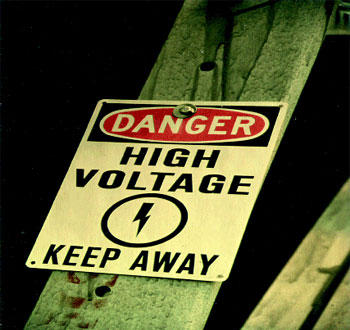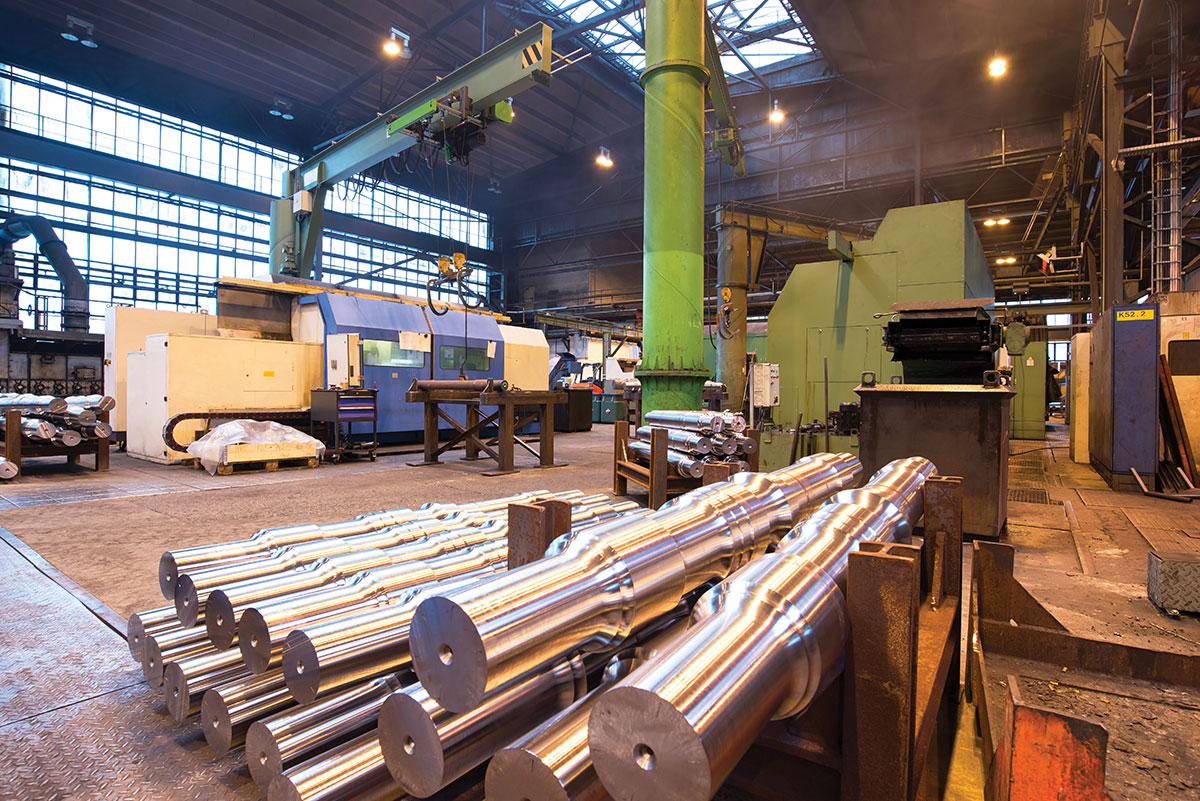How do we stop people from killing themselves? In particular, how do we stop teenage boys from climbing high voltage transmission towers like this one? Whether they are located in a secluded forest area or in someone’s backyard, a high voltage transmission tower looks like a “jungle gym” as we used to call them in elementary school. Every year, hundreds are injured and dozens are killed trying to climb them. Most of them are teenage boys. Why do they do it? Is it a dare? Are they looking for attention? Do alcohol or drugs impair their judgment? A nationwide TV campaign to inform them of the hazards wouldn’t stop them. It didn’t stop smokers.

Photo 1. A high voltage transmission tower located in an area where persons frequently gather
The 1997 National Electrical Safety Code® (NESC®) in Rule 217A2, page 62, states that, “”Readily climbable supporting structures, such as closely latticed poles and towers, including those attached to bridges, carrying open supply conductors energized at more than 300 V, which are adjacent to roads, regularly traveled pedestrian thoroughfares, or places where persons frequently gather (such as schools or public play grounds), shall be equipped with barriers to inhibit climbing by unqualified persons or posted with appropriate warning signs.”” The rule is followed by a NOTE referencing ANSI® Z535 the national standard for safety signs, labels, and tags as containing information regarding Safety Signs. To understand what towers are covered by Rule 217A2, we need to look closely at the elements of the rule.
Readily Climbable

Photo 2. Anti-personnel spikes on non-vertical elements of a tower
Readily climbable is defined in the definitions section of the NESC on page 9 as, “Having sufficient handholds and footholds to permit an average person to climb easily without using a ladder or other special equipment.” Since it is male teenagers who are getting killed, it is my opinion that any tower that is climbable by the average male teenager is subject to this rule. My twelve-year-old son is not an athlete. He doesn’t climb trees. Physically, he is not an average boy. One Saturday I asked him to help me. Dragging him away from his computer, we visited four transmission towers of various designs and vintage. He was able to climb two of the four towers to a height that proved to me that the only thing keeping him from climbing higher was his fear of heights. Climbing these towers was no harder than climbing trees.
Location
In my opinion, an urban environment is a place “where persons frequently gather.” I have seen towers like the one shown in photo 1 with rope swings attached to the lower elements.
Barriers

Photo 3. One example of a very effective barrier against climbing
It is tough to change teenagers’ behavior with a sign. The most effective and most expensive way to keep people from climbing towers is to construct a minimum six-foot tall chain link fence with barbed wire on top (total height seven foot) around the base of the tower. In my opinion, a chain link fence without barbed wire will only keep the dogs out. Fortunately, teenagers associate barbed wire with pain. Another alternative is mounting anti-personnel spikes on the non-vertical elements of the tower above the six-foot level like the ones shown in photo 2. Mounting them below the six-foot level might be considered as creating an additional hazard.
Another alternative is to wrap the tower elements above the six-foot level with barbed wire. This may be cheaper but I wouldn’t want to be the guy given the task to install it. I found a unique and very effective barrier shown in photo 3. Though also expensive, environmentalists will probably like it for its wild bird nesting accommodations.
Signs
The cheapest alternative is posting “”appropriate warning signs.”” Appropriate is the key word. That is why the NESC references ANSI Z535, the national standard for safety signs. As a member of the Z535 committee, I am very aware of what makes a sign effective. You might want to refer back to my November/December 1998 article on safety signs, labels and tags. The sign shown in photo 4 is typical of signs often used to try to convince people not to climb a tower.
Per ANSI Z535.2-1998 page 2, an effective safety sign should attract attention and indicate the relative level of the hazard with a signal word, and convey identification of the hazard, how to avoid the hazard, and the probable consequences of not avoiding the hazard. If the tower hazard we are trying to convey to the public is HIGH VOLTAGE, then the appropriate signal word to use is WARNING in black letters on an orange background. By the definition in ANSI Z535.2-1998 page 3, DANGER should only be used to indicate “an imminently hazardous situation, which, if not avoided, will result in death or serious injury.” A person standing inside a high voltage substation may be considered as being in “an imminently hazardous situation,” but a person standing at the base of a tower reading the sign is not. The high voltage is way up at the top of the tower. How to avoid the hazard can be expressed as,”KEEP OFF.” Psychologists say that phrases like, “DO NOT CLIMB” should not be used because they suggest climbing to a teenager. The consequence of not avoiding the hazard can be expressed as,”WILL SHOCK, BURN, OR CAUSE DEATH.” So, the appropriate sign should look something like this:
WARNING
HIGH VOLTAGE
KEEP OFF
WILL SHOCK, BURN,
OR CAUSE DEATH

Photo 4. A warning sign that is not as effective as it might be
Most of the people killed while climbing towers, die as a result of falling, not electrocution. So the hazard is really danger of falling. If you go through the same sign development analysis with the falling hazard that we did with high voltage hazard, I think you will agree that the WARNING, HIGH VOLTAGE sign is a much more effective deterrent than a WARNING, RISK OF FALLING sign. Yes we are exaggerating the shock hazard, but most teenagers are convinced that they will not fall.
Symbols should be incorporated into safety signs to convey the message to people who do not read English. Symbols should be tested per ANSI Z535.3 to insure that people understand their intended message. The lightning bolt on the sign in photo 4 has been tested many times in United States and found to be ineffective in conveying a shock hazard. There are many symbols that pass the testing and are very effective in conveying the message to the public.
If you have general questions about the NESC, please call me at 302-454-4910 or e-mail me at dave.young@conectiv.com.
National Electrical Safety Code® and NESC® are registered trademarks of the Institute of Electrical and Electronic Engineers. ANSI® is a registered trademark of the American National Standards Institute. ANSI Z535 is a publication of the National Electrical Manufacturers Association (NEMA®).










Find Us on Socials